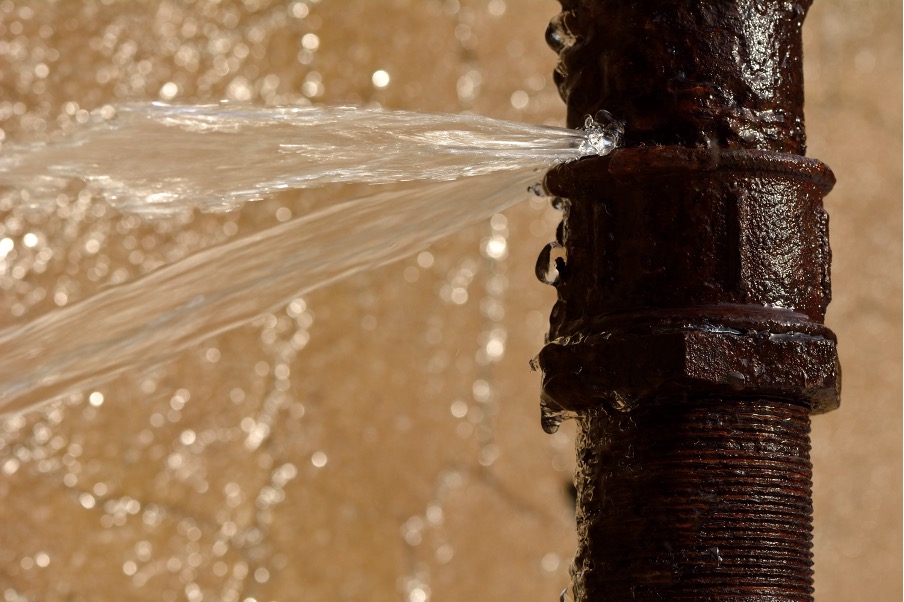Expose Hidden Water Line Leaks: 6 Tested Techniques for Spotting
Expose Hidden Water Line Leaks: 6 Tested Techniques for Spotting
Blog Article
How do you really feel on the subject of Locating water leaks?

Early discovery of dripping water lines can minimize a potential catastrophe. Some little water leakages might not be visible.
1. Analyze the Water Meter
Every home has a water meter. Examining it is a proven way that helps you discover leaks. For starters, shut off all the water resources. Ensure nobody will flush, utilize the tap, shower, run the cleaning machine or dishwasher. From there, go to the meter as well as watch if it will certainly change. Because no one is using it, there need to be no movements. If it moves, that indicates a fast-moving leak. If you discover no modifications, wait an hour or two as well as inspect back again. This means you may have a slow-moving leakage that can also be underground.
2. Inspect Water Usage
If you identify unexpected modifications, despite your intake being the very same, it indicates that you have leaks in your plumbing system. An unexpected spike in your bill indicates a fast-moving leakage.
At the same time, a constant boost monthly, even with the very same routines, shows you have a slow leakage that's likewise slowly rising. Call a plumber to completely check your property, specifically if you feel a cozy location on your floor with piping beneath.
3. Do a Food Coloring Test
When it comes to water consumption, 30% comes from commodes. If the color in some way infiltrates your bowl during that time without flushing, there's a leakage between the tank as well as dish.
4. Asses Outside Lines
Don't fail to remember to inspect your exterior water lines as well. Examination faucets by attaching a yard tube. Should water seep out of the link, you have a loosened rubber gasket. Change this and also ensure all connections are limited. It will certainly help obtain it skillfully checked out and maintained yearly if you've got a sprinkler system. One small leak can lose tons of water as well as spike your water costs.
5. Assess the scenario and also evaluate
Home owners need to make it a behavior to examine under the sink counters as well as even inside cabinets for any type of bad odor or mold growth. These two warnings show a leakage so timely attention is required. Doing regular inspections, even bi-annually, can conserve you from a significant issue.
Check for stainings and weakening as a lot of devices as well as pipelines have a life expectancy. If you think dripping water lines in your plumbing system, don't wait for it to rise.
Early discovery of dripping water lines can minimize a possible catastrophe. Some little water leaks might not be visible. Examining it is a proven means that helps you find leakages. One little leak can lose loads of water as well as increase your water costs.
If you believe dripping water lines in your plumbing system, do not wait for it to escalate.
How to Know If Your Home Has a Hidden Leak
Water Meter Reveals Inexplicable Water Usage
If you’d like to test whether or not there’s a leak somewhere in your home, you can do this using your water meter. Here is how to conduct the test:
Don’t use any water in your home for at least 30 minutes; this also means not turning on faucets or water-using appliances.
Go outside, and check your water meter for activity.
If your water meter shows that there was activity, even though no one was using any water, this proves that there is a leak in your home.Visible Mold or Mildew Growth
Leaks behind walls create moist, dark environments that allow mold and mildew to grow and thrive. Eventually, you might see mold growth forming on the wall closest to a hidden leak.
If mold is growing in an area that receives a high amount of moisture, such as a bathroom, it may simply be an indication that better ventilation is needed. However, if you see mold growth on a wall or the ceiling in an area where you would not expect, you probably have a hidden leak.
Musty, Mildew Odor
Sometimes you might not be able to see the mold or mildew that is growing as a result of a leak. However, the smell can give the problem away just as easily. If you catch a whiff of something musty, there’s a good chance that old water is collecting somewhere in your home that you can’t see.
Stained/Warped Walls, Ceilings, or Floors
When your home soaks up water, a variety of red flags can become visible, including ceiling stains, bubbling drywall, warped walls, and sagging floors. While these issues can be caused by excess humidity, they can also be signs that a pipe or plumbing connection has started leaking behind your walls.
Inexplicably High Water Bill
After a while, you get a general sense for what your water bill should be. If you own a pool or sprinkler system, your bill will tend to be higher during summer. However, if you receive a water bill that seems especially high, and you can’t figure out what caused it, then you may have a hidden leak somewhere that’s increasing your bill.
https://www.plumbingjoint.com/blog/2019/july/how-to-know-if-your-home-has-a-hidden-leak/

I am just very fascinated by Leaking water lines and I am assuming you liked my post. Sharing is caring. One never knows, you will be helping someone out. Many thanks for going through it.
Address plumbing needs. Report this page